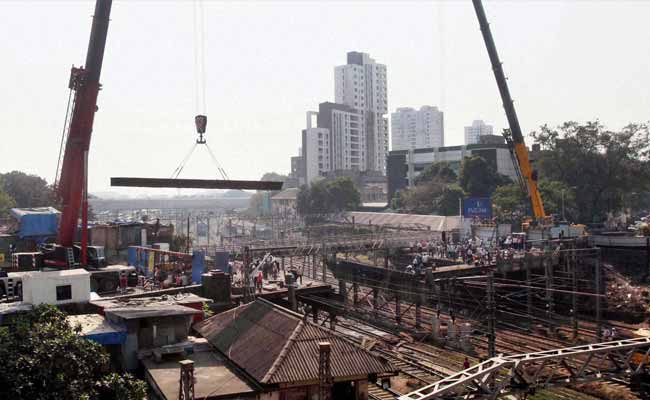
Built in 1879 and rebuilt in 1923, Hancock Bridge was named after Colonel HF Hancock, who served as the chairman of the Brihanmumbai Municipal Corporation between 1877-78.
MUMBAI: The Central Railway today operated an 18-hour-long 'mega block', or curtailment of trains, on its main line between Byculla and CST railway stations to dismantle the iconic 136-year-old Hancock Bridge.
The mega block, which began at 12.20 am, was lifted in evening, resuming the suburban train services on the stretch after 6:20 pm.
Though the block was squarely criticised by commuters, its operation passed off hassle-free as many people preferred to stay indoors due to Sunday while some took either Harbour line route to reach CST or Dadar to reach Churchgate station in South Mumbai.
"The first suburban train (after block was lifted) to Asangaon left CST at 7.10 pm, while the first mail train departed from CST at 7.45 pm," Central Railway senior PRO AK Jain said.
Claiming "successful completion" of the block, Mr Jain gave credit for the same to advanced planning and focused work of engineering staff.
Built in 1879 and rebuilt in 1923, Hancock Bridge was named after Colonel HF Hancock, who served as the chairman of the Brihanmumbai Municipal Corporation between 1877-78.
The bridge was closed for road and pedestrian traffic since November 18, 2015. It will be rebuilt later.
On razing of the bridge, Jain said the task was accomplished with the help of 650 staff and 50 engineers.
"Two huge trains weighing 300-tonne each worked seamlessly for 18 hours to ensure timely resumption of the suburban and mail services," he said.
Deputy Chief Engineer (Construction), Dadar, Rajeev Mishra, in-charge of the operation, explained how the bridge was dismantled.
"First, we closed down the carriageway and after diverting utility cables, pipelines etc, we removed concrete from troughs and cut the rivets.
"Then gas cutters were used to cut inter-connected troughs by individual members and there were two 300-tonne capacity cranes deployed with standby on either abutment. The steel troughs were lifted by a road crane and scrap disposed of through road trailers," Mr Mishra told PTI.



.jpg)
.jpg)



0 comments:
Post a Comment